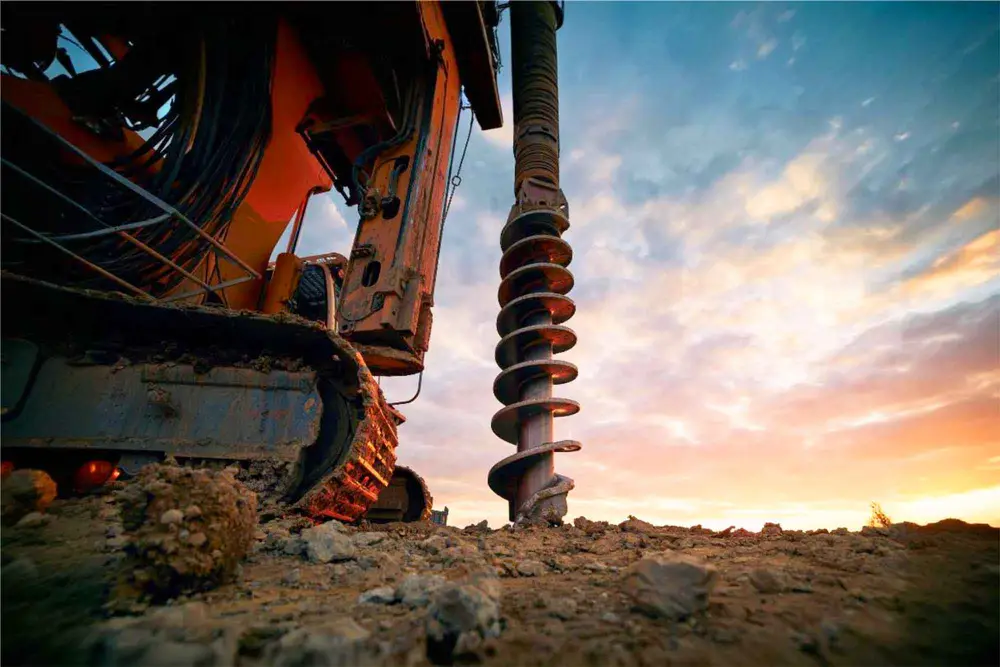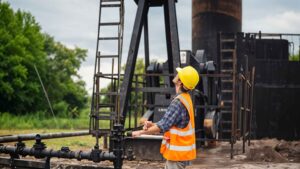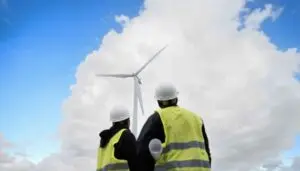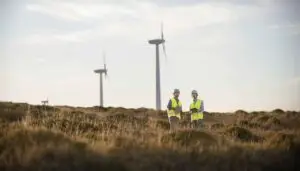The first thing that comes to mind when considering the oil and gas industry is the drilling done into the ground.
Directional drilling, a more flexible and precise version of drilling, works together with vertical drilling to extract energy from the ground and install utilities.
That is, directional drilling allows the drill to reach multiple reservoirs more efficiently and tap hard-to-reach places with less disturbance to the surrounding area.
Directional drilling jobs offer an interesting career in the energy sector that reaches beyond energy to data analysis and infrastructure.
What Is Directional Drilling?
Directional drilling is an extraction technique oil companies use to access oil in underground reserves. Also called directional boring, directional drilling encompasses any drilling activity that aims to find oil or gas and operates in a non-vertical direction.
According to the International Association of Drilling Contractors (IADC), directional drilling has been around since the 1920s when hardwood wedges shifted the drilling bit, turning traditional vertical drilling into horizontal drilling.
Modern techniques were created in the 1930s when motors created two directionally controlled boreholes from Huntington Beach, California, to an oil and gas deposit under the ocean offshore.
Common Techniques and Tools
Directional drilling relies on machinery, including drill bits, stabilizers, motors, and analyzing software like monitoring systems.
The engineers use the information geologists provide and software to design the trajectory of the well and the angle of attack for the bore. They document this information and pass it along with any caution to the drillers so they can work quickly and safely.
“No two days as a directional driller are the same.“
With their information, drillers choose the best techniques to use based on angles, the hardness of the ground, and obstacles present in the drill’s path. Techniques such as multilateral drilling and horizontal drilling maximize efficiency, minimize surface disruption, and reduce the impact drilling has on the environment.
A Day As a Directional Driller (The Ins and Outs of the Job)
No two days as a directional driller are the same. In fact, there is no typical day for a driller because it depends so heavily on the drilling conditions they are working under.
However, there are many commonalities between drilling sites. Most drillers work with heavy machinery, analyze data, and work closely with others in specialized fields to fully understand the site they are working on.
Work Environment
Directional drilling is primarily outdoor, physical work. Drillers usually work away from home, living in camps near the drilling site for two to three weeks at a time and then having two weeks off.
Work days usually include physical work broken up into shifts or variable hours, with an average workday for a directional driller being 8 to 14 hours per shift while working either onshore or offshore.
Some drill sites are easy to work, and others have complicated conditions that require problem-solving or specialists to join the drillers before the drilling can change from vertical to horizontal. All sites are safety-sensitive, and drillers must always be aware of their surroundings.
Then environmental issues can take a toll on you as a driller. Every employee must understand how to safely work in extreme weather conditions and deal with any wild animal that may come to the rig and the conditions associated with the landscape around the drilling site.
However, this has become safer for many drilling sites as drillers are often taking up residence in areas that have already been made secure for mining operations.
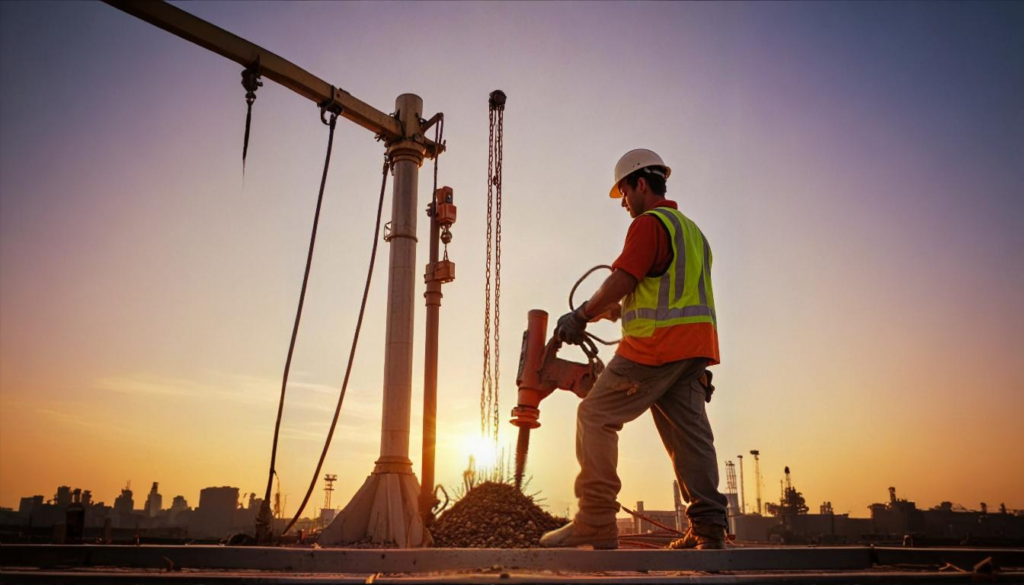
Tasks and Responsibilities
The primary responsibility of a directional driller is to control the direction of a wellbore with a variety of specialized bottom hole assembly (BHA) tools and configurations designed to steer a drilling head. You also monitor information transmitted from sensors on the bore and surface, including the real-time performance of the drilling operation.
“One of the biggest challenges for this job is the physical strain you would have to face as a driller on a rig offshore or onshore. “
The job includes many additional tasks and begins before the bore is even in the ground 0with a study of the well path or profile created by a geologist or engineer after analyzing the ground conditions. This study helps the drillers understand the incline and depth of the drill so the direction can then be calculated.
You would then gather the necessary information and equipment for your day. The drilling supervisor and directional contractor would assign tasks to all the drillers based on ground conditions and well paths.
Challenges In Directional Drilling
As a directional or directional driller contractor, you would encounter several challenges, both day-to-day pressures and your overall career. Onshore and offshore drilling will present slightly different challenges, but many of the issues drillers face are there for both oil and gas drilling types.
One of the biggest challenges for this job is the physical strain you would have to face as a driller on a rig offshore or onshore.
Drill rigs usually operate twenty-four hours a day, and to keep that schedule, drillers must work long shifts that start early in the morning, finish work very late at night, or a combination of the two.
Physical fitness is very important, and as a directional driller, you would require a fitness level to ensure tasks are carried out quickly and safely. These labor-intensive tasks include heavy lifting, long amounts of time on your feet, and manual handling.
Other duties include:
- Preparing samples
- Moving and setting up equipment to start or repair the drill
- Fueling the rig
- Removing core samples or collecting rock chip and mud samples
- Equipment maintenance
- Site preparations
The other challenge is unpredictability. All staff must complete certain training programs to know what to do when equipment malfunctions or geological conditions differ from what was originally planned.
Knowing how to cope with extreme weather or equipment with a reduced capacity is one reason that problem-solving is a key skill that all directional drillers need.
“Directional drilling is not just one pathway but a range of options “
Throughout the drilling process, you would work alongside the Measurement While Drilling (MWD) Specialist responsible for collecting data to keep the project on track and help solve problems.
A Career as a Directional Driller
If the job as a directional driller sounds interesting to you, there are several qualities that you should have before you begin applying for an entry-level position. This position is usually as a driller’s assistant, allowing you to learn on the job and experience being a driller first hand.
Key Skills
There are key skills you will want to have when applying for any energy job, including:
- Strong problem-solving and communication skills
- The ability to work well with others
- Analytical skills
- Adaptability
- A proficiency with specialized equipment
- Ability to interpret geological data or the willingness to learn on the job
- Working in remote locations, often for weeks at a time
In addition to these general skills, there are oil and gas-specific machines, techniques, and equipment that drillers should be proficient with to make the most of their time drilling.
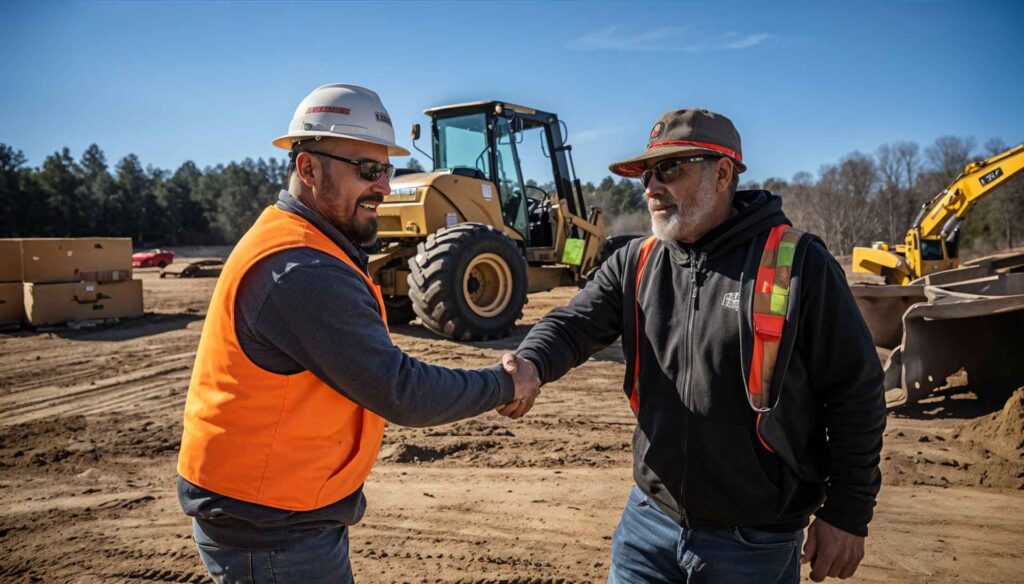
What Is Needed to Qualify
Directional drilling is not just one pathway but a range of options that begin with the driller’s assistant or drill operators and advance to drilling engineers.
Each position should be analyzed for its specific requirements.
- Education: The minimum is a high school diploma or GED with a strength in math. You may also want a post-secondary diploma in engineering, geology, petroleum, or another technical discipline to pursue more advanced jobs.
- First aid: Standard and emergency.
- Safety Courses: Completion of H2S Alive®: how to work in hydrogen sulfide (H2S) environments. The course includes the correct use of protective equipment, hazard assessment and control, and response strategies.
- Driver’s license: (class 5) and clean driving record. Some sites may require additional certification to operate heavy equipment.
- Physical fitness: The ability to pass a physical assessment and drug test.
Directional Drilling Jobs Advancement
From an entry-level position, many drillers move into supervisory or management positions, passing on their knowledge to another group of drillers. Others may transition into specialized positions relating to their interests and education or move on to overseeing multiple projects and ensuring complex drilling operations run smoothly.
What Is the Future of Directional Drilling Jobs
The energy sector currently provides most directional drilling jobs, primarily in oil and gas. As a driller, you would be hired to assist in infrastructure projects like pipeline installation and the construction of utilities to support energy systems already in place. There may also be jobs assisting in data collection for research and development projects.
Other than sites in North America, you could apply for a job in areas of the Middle East and Southeast Asia, which are known for their oil and gas reserves and the driving need for skilled drillers.
However, as renewable energy becomes a more dominant force in the energy sector, drilling jobs for oil and gas have been changing. Companies are beginning to focus on discovering new energy sources and using expertise for geothermal projects.
Conclusion
Directional drilling can be a challenging career path but rewarding for those who enjoy the challenges that come with it. If you have a mind that enjoys solving problems and working with others and can handle its physically demanding nature, consider directional drilling.
The industry’s growth in technology has led to new job opportunities that may meet your skillset. For more information about the oil and gas industry and working in the energy sector, check out EnergyJobSearch.

